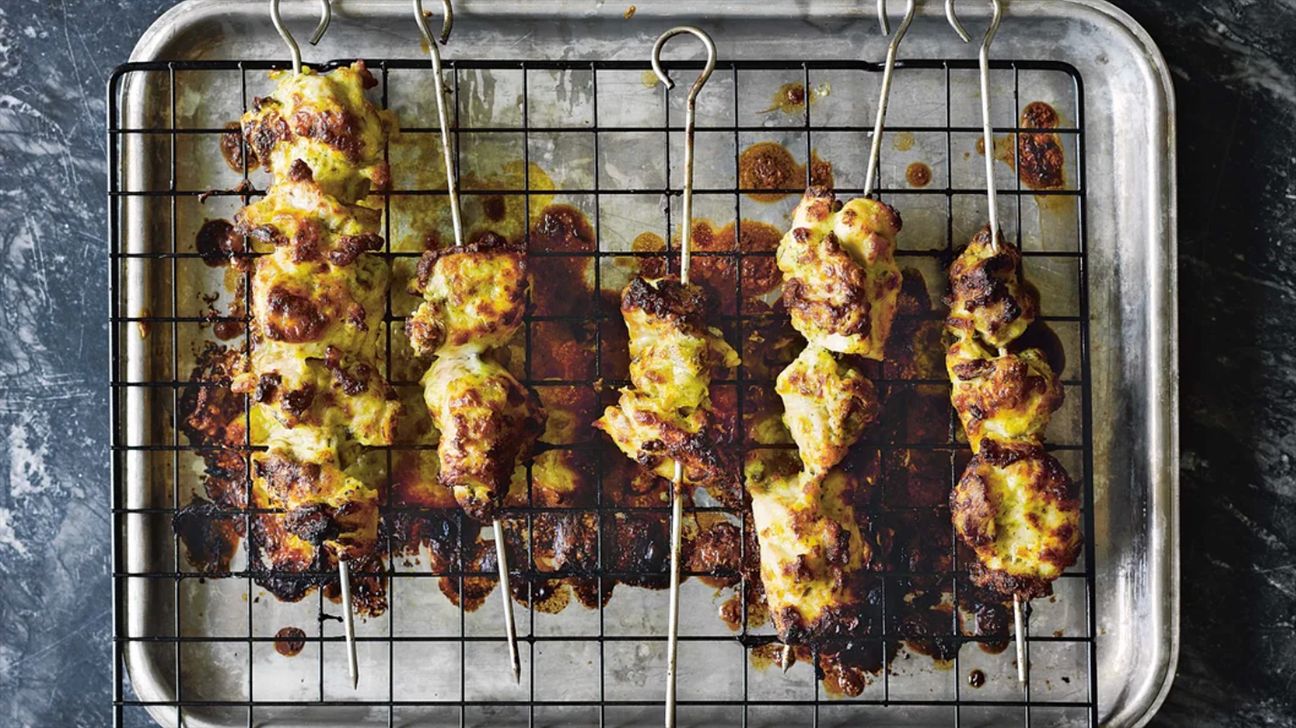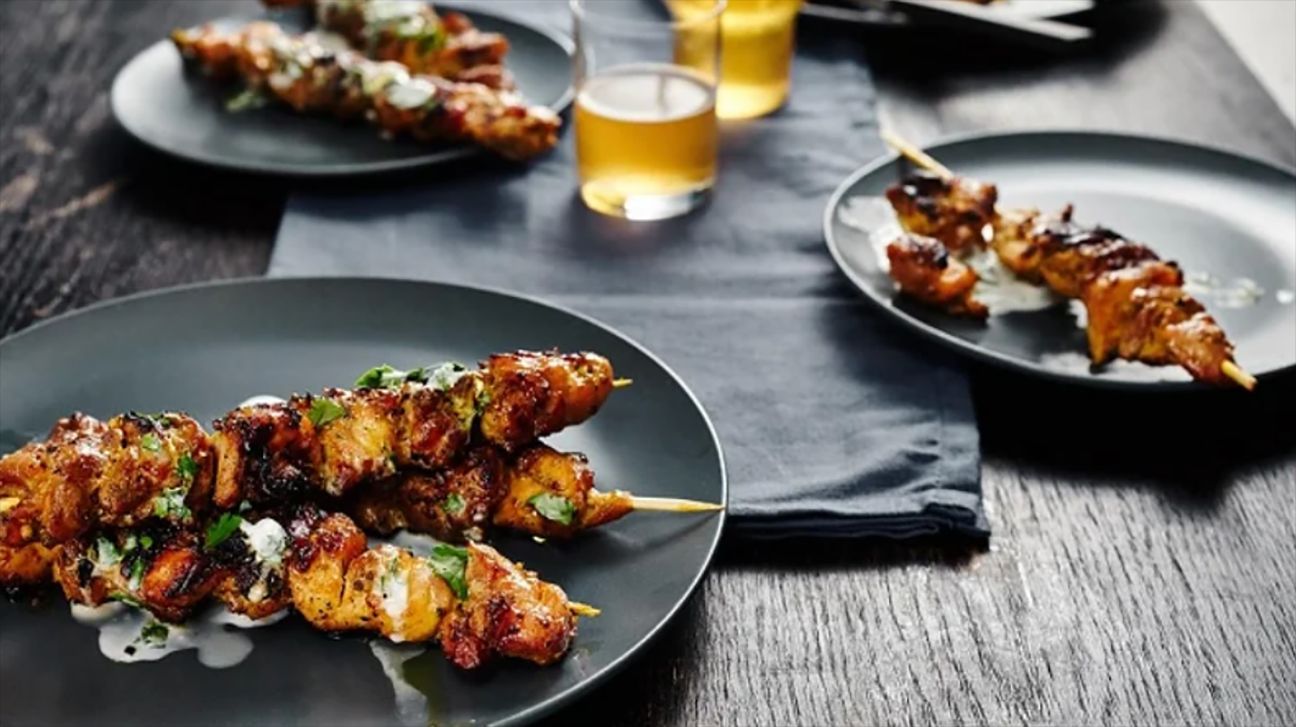We include products we think are useful for our readers. If you buy through links on this page, we may earn a small commission. Here’s our process.
Greatist only shows you brands and products that we stand behind.
Our team thoroughly researches and evaluates the recommendations we make on our site. To establish that the product manufacturers addressed safety and efficacy standards, we:- Evaluate ingredients and composition: Do they have the potential to cause harm?
- Fact-check all health claims: Do they align with the current body of scientific evidence?
- Assess the brand: Does it operate with integrity and adhere to industry best practices?
No grill? No problem. You can still get that iconic grill flavor indoors, in a number of ways. Check out these tips and tricks to achieve great BBQ taste without a grill, all year round.
Explore Your Options:

There are some truly bizarre options out there for MacGyver-ing homemade barbecues, but there are far easier ways to replicate that smoky flavor and beautifully charred appearance without resorting to hacking Altoids tins or old washing machines into grills. The best option you almost definitely already have: the broiler built into your oven! If you’ve never used it before, there’s no need to be afraid, but you might want to do a practice run to get acquainted with just how hot your broiler gets (and how fast), as well as the optimal placement of food relative to your heating element.
Most broilers are on the “roof” of the oven, but sometimes they’re on the bottom, and can even be in a separate compartment underneath. A gas broiler will emit actual flames, while an electric broiler will have coils or wires that glow when hot. Generally, you should turn the broiler on and let it preheat for 5 minutes before putting in your food—which you may need to rotate during cooking time to get everything evenly done. And never walk away from a broiler in action, as things can easily burn. Speaking of, if it’s been a while since you cleaned your oven, consider doing that first, or else you could be dealing with a whole lot of acrid smoke.
Avoid using glass dishes under the broiler. Some ovenproof ceramic dishes are okay, but to be safe, stick to rimmed metal baking sheets instead. Line them with foil for easy clean-up, and consider elevating the food on a wire cooling rack set in the pan, so the fat doesn’t pool. Here’s a more in-depth guide to broiling if you’re still a little nervous.
Once you have the hang of it, you can use the broiler on its own for proteins and vegetables that cook relatively quickly—try broiled chicken, broiled tofu, broiled salmon and other seafood, even broiled tomatoes for a smoky salsa, or broiled stone fruit for dessert. It also does steak, burgers, and kebabs of all sorts—and you can use it to add a little welcome char to already-cooked meats, like oven baked or slow cooker braised ribs finished under the broiler.
Try It: Turmeric Chicken Skewers
Any grilled kebab or skewer recipe can be made under the broiler instead. It should usually only take about 10-12 minutes max to cook them no matter what kind, but check early on to make sure they’re not burning or drying out, and consider flipping them over after 5 minutes (tongs are useful here). Aim for medium-hot if your broiler has temperature settings, but if it only has an on/off setting, that’s fine. Just be sure to preheat it in any case, and make sure you’ve soaked your wooden skewers ahead of time, or use metal ones that won’t burn. Get this Turmeric Chicken Skewers recipe. Or try this Chicken Tikka recipe from London’s Dishoom.
What we think of as a “grilled” flavor generally comes from char and smoke commingling, but smoke alone can evoke memories of backyard barbecues well enough. If you’ve always wanted to try your hand at smoking meats (or practically any other food), you don’t have to drop mega cash, or necessarily need any outdoor space either. You will want to ensure there’s a lot of ventilation inside—open up windows, use your fan(s), and consider temporarily disabling your smoke alarm just in case, as long as you remember to turn it back on when you’re done.
There are several methods of smoking indoors: you can simply purchase a stovetop smoker pan, turn a wok into a stovetop smoker, rig an aluminum roasting pan into a smoker, or use a deep stock pot and a colander as another DIY option. In any case, you’ll need wood chips, but you can play around with different types to get variations in the smoky aroma and flavor.
Try It: Stovetop Smoker Ribs
These baby back ribs get a rub that includes Chinese five spice powder, paprika, and brown sugar, then spend an hour in a smoker on top of the stove over pecan wood chips. Next, they’re transferred to a baking dish in the oven to finish cooking, with a brief final blast from the broiler to help crisp up the bark. You should be able to achieve comparable results with a homemade smoker, and can try different wood types and rubs to change up the flavors as you like. Get the Stovetop Smoker Ribs recipe.
Cedar planks aren’t just for salmon, and they’re not just for the grill, either! You can cook pretty much anything you fancy on a well-soaked plank (from beef or veggie burgers to halloumi cheese)—and pretty much any plank recipe for the grill can be adapted to the oven instead. The cedar itself imbues a subtle smoky fragrance with hardly any fuss. Intrigued? Check out these tips for using cedar planks in the oven.
Try It: Cedar Planked Salmon
You really can cook anything on a cedar plank, even hot dogs, but salmon is a classic choice. Ours includes an herbed yogurt sauce, but you could try simple lemon and butter instead, or whatever sauce you like (soy-based with garlic and ginger, or a miso-maple combo would be especially good). Get our Cedar Planked Salmon recipe.
It might seem like cheating, and it’s not quite equivalent to true grilled flavor, but bacon does help boost the smokiness of other foods. As long as none of your guests are opposed, sprinkle a little bit in basically anything; it’s the fairy dust of the meat world.
Try It: Triple Bacon Burger
If you grind your own hamburger meat, you could mix some crumbled bacon inside the patty while you’re at it…but the sweet-smoky bourbon-bacon jam, bacon garlic aioli, and crisp cooked bacon strips that top this triple threat of a burger are probably sufficient. Feel free to swap out the Colby Jack cheese for a smoked Gouda or smoked cheddar, though! Get the Triple Bacon Burger recipe.
Liquid smoke is looked down upon by many, but it’s a legitimately useful ingredient that adds a nice hazy tang when applied judiciously. You could also try smoked beer for marinades and sauces, or use a bit of blackstrap molasses, which has a faint bitterness that can add a smoky sort of taste. Even lapsang souchong tea works—brew it up and add it to a sauce or marinade. A bit of smoky bourbon can do the trick as well.
Try It: Smokerless Smoked Chicken
This beautifully burnished chicken is incredibly simple. The only other ingredients besides the bird are liquid smoke, liquid aminos or soy sauce, blackstrap molasses, salt, and water. You can add barbecue sauce if you wish, but it’s definitely not required. Get the Smokerless Smoked Chicken recipe.
Certain spices and seasonings can impart a nice smoky nuance to any dish. Smoked paprika is an obvious choice, but there’s also chipotle (whether powdered, in whole dried pepper form, or canned in adobo), not to mention bacon salt (which often doesn’t contain actual meat, but if you’re serving vegans or vegetarians, double-check the label). There are other smoked salts, smoke powder, and the aforementioned lapsang souchong tea too, which you can grind superfine and mix directly into other ingredients for a DIY dry rub. Incorporate any of these ingredients in marinades, rubs, or sauces—and combine them with the broiler method for extra oomph.
Smoked paprika and Aleppo pepper bring the hazy flavor here, complemented perfectly by beer, honey, and hot sauce for amazing oven-baked ribs. Get the Spicy, Sweet, and Smoky Oven Ribs recipe.
This easy pulled pork recipe also uses sweet smoked paprika for a BBQ flavor, along with cumin, mustard, garlic, and brown sugar. There are directions for cooking the pork in either a slow cooker or an Instant Pot, but you could use a Dutch oven as well. And try using other smoky seasonings instead of—or, as long as you don’t go overboard, in addition to—the paprika to impart a different dimension to the meat. Get the BBQ Pulled Pork recipe.
Barbecue sauce can’t help but evoke the grill, and many sauces already have smoky elements to balance sweet and spicy flavors. Slather some on ribs, chicken, plant-based proteins, even burgers, and you’ll feel like you cooked out even if you were actually inside the whole time.
Try It: Smoky-Sweet BBQ Beef Short Ribs
These baked beef short ribs are rubbed with a multitude of spices, including paprika, cayenne, and chili powder, and then covered in a sweet-smoky sauce accented with chipotles in adobo. The recipe calls for finishing them on the grill, but you can run them under a broiler instead. Get our Smoky-Sweet BBQ Beef Short Ribs recipe.
You would think these would be a great indoor grilling option, right? “Grill” is right there in the name, after all. But while they can sear perfect-looking grill marks into meats and vegetables, it’s probably not worth investing in one if you already have a standard cast iron pan. They work essentially the same way, although the ridges on a grill pan not only mark the food, but funnel the fat away (and make cleanup a little harder, to be honest). If you still want one, go for it. We can’t deny the appeal of those perfect char lines (as seen in our Paprika Grilled Salmon recipe). And if you combine this method with one of the above flavor tricks, it’ll be even better.
These can be great if you have limited outdoor space or just want a rainy day option. But building layers of smoky flavor in your food via seasoning and/or actual smoke is still a good first step, whether you finish it under the broiler for a bit of char, cook it in cast iron, or on an indoor grill.

